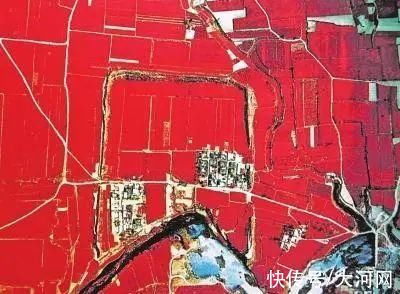城址$双语说河南|在中原 追寻夏的轨迹( 二 )
Many historical documents record that Yu (who built the Xia Dynasty) and Qi (the second king of the Xia Dynasty) once lived in Yangzhai (today's Yuzhou city). The story of Qi who called together the heads of the local states and held a grand sacrificial ritual to establish his chief position and abandon the abdication system also happened in Yuzhou. Since Yu and Qi, Yuzhou had become a main living area of the people of the Xia Dynasty. Henan Institute of Archaeology discovered the Wadian Site in 1979 followed by the first stage excavation from 1980 to 1982.
文献记载的夏禹、启居阳翟,夏启“钧台之享”的地望就在禹州,自禹、启以来,禹州地区即成为夏人的主要活动地域。1979年,河南省考古研究所在颍河两岸进行考古调查时发现瓦店遗址后,于1980年至1982年开始了第一阶段的发掘。
The Wadian Site, a major site of the Xia-Shang-Zhou Chronology Project, the Project for Tracing Chinese Civilization Origins and the study of the Xia Dynasty, occupies an irreplaceable position among the ancient sites of the same period in China. Important findings over the past 40 years include large circular trench, sacrificial remains, Egg-shell Black Pottery Cup with High Handle and Polished Black Pottery Gu (a ritual or drinking vessel), white pottery wares, jade, etc. The remains of bones and tortoise shells were also discovered at the Wadian Site. Judging from the cultural relics and the food remains, the site was a gathering place of people with diverse cultural backgrounds and a regional center settlement in the southeast of Songshan Mountain. Experts believe that the Yinghe River basin enjoys unique geographical advantages, which may be closely related to the rise of China's first dynasty, the Xia Dynasty.
作为夏商周断代工程和中华文明探源工程的重要研究对象和我国夏文化研究的重点遗址之一,瓦店遗址在全国同时期古文化遗址中占有无可替代的地位。经过40多年的调查、发掘、整理与研究,瓦店遗址取得了重要考古成果:发现了大型环壕、大型祭祀遗迹,出土有蛋壳陶高柄杯、磨光黑陶觚形器、白陶器、玉器等高等级精美器物,以及占卜用的卜骨、龟甲等,无论从遗物还是人群的食性特征看都是一处多元文化背景的人群聚集之处,体现了这里多元文化融合和“商贸”因素的重要作用,是嵩山东南一处区域性中心聚落。专家认为,颍河流域得天独厚的区位优势,或跟中国第一个王朝“夏”的崛起紧密关联。
Major discoveries include circular trench, sacrificial remains, Polished Black Pottery Gu (a ritual or drinking vessel), bones, etc.
重要遗迹遗物:环壕、祭祀遗迹、磨光黑陶觚、卜骨等。

文章插图
The Guchengzhai Site in Xinmi: Thousand-Year-Old City Wall Still Stands
新密古城寨城址:历经千年城墙犹在
The Guchengzhai Site covers an area of 176,500 square meters with the discovery of three sections of city wall, rammed-earth building and corridor foundations, ash pits, tombs, foundation pits, etc. The rammed-earth foundations should be built for the palace buildings. With high wall and deep moat, it was carefully and intentionally designed and built with insular and military characteristics, showing the complete dual defense system in the the city-building history of ancient China.
古城寨城址,总面积17.65万平方米。主要发现有城墙、夯土建筑基址和廊庑基址、灰坑、翁棺葬、奠基坑等。夯土建筑基址当为宫殿建筑。其高墙深池,显示了其封闭性和军事色彩,是经过统一规划和精心设计的,也是我国古代筑城史中完备的双重防御体系之一。
Close to the core area where the Xia people lived, the Guchengzhai Site is one of the important symbols separating the culture of the Xia Dynasty form the culture of the late Neolithic Age. Particularly, the source of the rammed-earth foundations for palace buildings at the Erlitou Site has been found with the discovery of the city wall and the large rammed-earth building foundations (for palace buildings) at the Guchengzhai Site, a precedent for the layout of the palace buildings of the Shang Dynasty (1600-1046 BC) which were located in Northeast Zhengzhou at that time. Besides, the Guchengzhai Site has unveiled the characteristics of the civilizations of both the Xia and the Shang dynasties, becoming an important evidence to study the formation of ancient Chinese civilization and the emergence of the state. In the 1980s, the site was named as the Ancient City of the Kuai State. However, later excavations suggest that the site is even older than the Kuai State. The remains discovered there are mainly of the Longshan Culture period.
- 小说$6本男主假高冷小说,强推《镇河》好好笑,作者脑洞未免也太大了
- 王之心&四本开局就惊艳读者的小说,一看书名就想入坑,书荒的你值得拥有
- 船夫&新科状元乘船回家,船夫随口说出一上联,状元却至死都没对出来
- 热血小说$15年老书虫推荐3本百看不厌的热血小说,值得你通宵达旦看完啊!
- 梁炎东!3部强逻辑悬疑小说,人间修罗案神乎其神,谁能戳破鬼怪谣言?
- |茅奖小说《暗算》出版20年,精装版归来继续密码和人心全解密
- 逍遥小书生!五本不输《赘婿》的架空历史小说,评分高达9.5!全部都是精品
- 方腊#鲁智深生擒方腊后说了2句话,共6个好汉听懂了,离开宋江得善终
- 进化&碾压《诡秘之主》,反超《牧神记》,辰东这本小说爆红逆袭登顶
- 帕子@《我的前夫是宦官》当我的丈夫是个宦官,我和他不得不说的故事!
